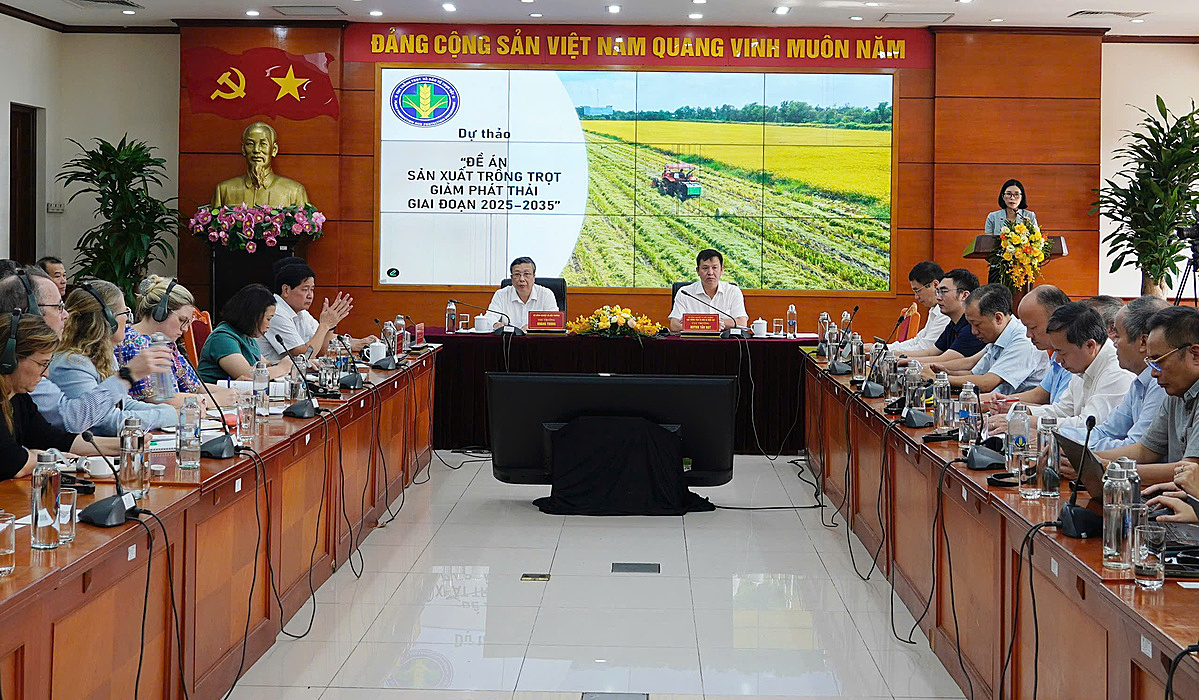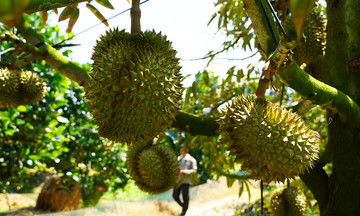At a conference on July 30, the Ministry of Agriculture and Rural Development discussed a draft plan for low-emission crop production from 2025 to 2035. Nguyen Thi Thu Huong, Deputy Director of the Department of Crop Production and Plant Protection, said Vietnam's total greenhouse gas emissions are about 454.6 million tons of CO2 equivalent, nearly double the 2010 level.
Agriculture accounts for about 116.51 million tons of these emissions. Rice cultivation, other key crops, and the burning of agricultural byproducts in fields contribute about 80% of the agricultural sector's emissions.
Huong shared that the plan aims to significantly reduce methane emissions by 30% and overall greenhouse gas emissions by at least 10% by 2035, compared to 2020 levels.
 |
Consultation meeting on the draft plan for low-emission crop production, July 30. Photo: N.N |
"Without a comprehensive approach, current farming practices will not only harm the environment but also hinder Vietnam's agricultural exports. International markets are increasingly demanding reductions in emissions, sustainability certifications, and carbon footprint traceability," Huong said.
The plan also aims to implement at least 15 low-emission production models in various ecological zones and pilot at least five farming models capable of generating carbon credits that meet international standards. It will also develop and issue at least five low-emission production techniques for five key crops, and establish a crop-specific, regionally categorized emissions database connected to the National Registration System.
Additionally, the plan includes training at least 3,000 local technicians, agricultural extension workers, farmers, and businesses nationwide on relevant techniques, policies, awareness, and emissions measurement tools.
 |
Terraced rice fields on the slopes of Ngoc Linh mountain, Quang Ngai. Photo: Thao Vy |
The drafting agency expects the plan's implementation will lead to the adoption of techniques like alternate wetting and drying (AWD), efficient fertilizer management, and the use of bio-based materials. These practices could reduce input costs by 5-15% compared to conventional farming. Low-emission production with carbon traceability and environmental certifications should give access to high-value markets: such as the EU, Japan, and North America, with potential price increases of 10-25%.
"The plan will significantly contribute to reducing greenhouse gas emissions. Effective implementation could reduce emissions by 8 to 11 million tons of CO2 equivalent per year," a Ministry representative said.
The Ministry proposed two implementation options. The first focuses on five crops (rice, cassava, coffee, bananas, and sugarcane) nationwide. The second encompasses all crops nationwide from 2025 to 2035, with a focus on key crops and the inclusion of international partners.
Gia Chinh












